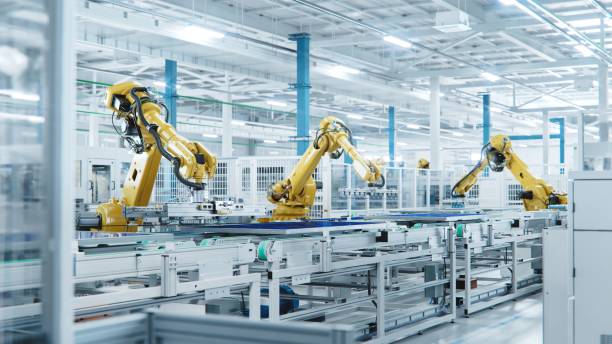Energy Management Practices for Industrial Facilities
Energy management in industrial facilities focuses on reducing consumption, improving operational efficiency, and integrating technologies that support sustained performance. This overview highlights practical practices across manufacturing and production systems, emphasizing automation, digitization, maintenance, and compliance to help facilities manage energy use more effectively.

Effective energy management is increasingly essential for industrial facilities that balance production targets, regulatory compliance, and sustainability goals. Plant managers, engineers, and operations teams must apply practical measures across processes, equipment, and workflows to reduce energy intensity without compromising output or quality. This article outlines strategies applicable across manufacturing environments, touching on automation, digitization, maintenance routines, materials handling, logistics, and the role of compliance in shaping energy strategies.
How can manufacturing and production reduce energy use?
Manufacturing and production workflows can reduce energy consumption by targeting process inefficiencies and lost energy streams. Conducting energy audits across production lines identifies high-use equipment and idle periods where load shedding or consolidation can reduce demand. Optimizing process parameters—such as temperature setpoints, cycle times, and compressed air use—typically yields immediate savings. Employee training tied to energy-aware operating procedures helps maintain gains. Integrating efficiency checks into production planning ensures that energy considerations are part of continuous improvement rather than an afterthought.
What role does automation and robotics play in energy efficiency?
Automation and robotics can deliver both energy and productivity improvements by precisely controlling motion, reducing wasteful rework, and enabling faster cycle times. Robotic systems can be programmed to minimize unnecessary movement and idle time, and automated control of conveyor speeds and machine sequences can smooth power draw. When combined with energy-aware control logic—such as sleep states for inactive cells—automation reduces peak demand and average consumption. Evaluations should include lifecycle energy for new equipment to ensure net reductions when replacing older machinery.
How does digitization and IoT enable smarter energy use?
Digitization and IoT create visibility into real-time energy flows and equipment health, which supports targeted interventions. Sensors on motors, drives, boilers, and HVAC systems feed dashboards and analytics that reveal patterns and anomalies. Predictive analytics can signal when a machine begins consuming more energy than expected, steering maintenance before larger failures occur. Scalability of IoT solutions allows phased rollouts by plant or process, enabling facilities to prioritize high-return areas while building data platforms for long-term planning and benchmarking against similar operations.
How to align maintenance, quality, and materials for better energy outcomes?
Maintenance practices and quality control have direct effects on energy performance. Poorly maintained bearings, misaligned rollers, or fouled heat exchangers increase energy draw and degrade product quality. Implementing condition-based maintenance reduces both downtime and excessive energy consumption. Material selection and handling affect energy too: lighter or more uniform feedstock may require less processing energy, while contamination can increase cycle times. Cross-functional programs that link materials engineering, quality assurance, and maintenance planning help sustain energy gains.
How can logistics, production scheduling, and scalability impact energy consumption?
Logistics and production scheduling influence facility energy profiles through sequencing, batching, and demand peaks. Consolidating similar batches reduces changeovers and associated energy spikes; scheduling energy-intensive tasks during lower-tariff periods can lower costs in variable-rate markets. Scalable operations that allow modular production units to be taken offline or brought online based on demand avoid running oversized systems at partial load. Considering energy implications in supply chain decisions—for example, storage location and transport frequency—also contributes to system-wide efficiency.
How do sustainability goals and regulatory compliance shape energy strategies?
Sustainability objectives and compliance requirements often set the framework for corporate energy strategies. Regulatory measures can mandate emissions limits, reporting, or energy intensity targets, pushing facilities to adopt monitoring, verification, and mitigation measures. Aligning internal sustainability metrics with compliance obligations helps prioritize investments such as conversion to low-carbon fuels, electrification of processes, or renewable energy procurement. Transparent measurement and documentation are essential for both meeting regulations and demonstrating progress to stakeholders.
Effective energy management in industrial facilities combines operational discipline, targeted investment, and data-driven decision making. By integrating automation, digitization, proactive maintenance, and thoughtful materials and logistics planning, facilities can reduce energy intensity while maintaining production and quality. Regulatory and sustainability drivers provide additional motivation and structure for continuous improvement. The strategies described here form a practical framework that can be tailored to facility size, sector, and regulatory environment, supporting resilient and efficient industrial operations.





